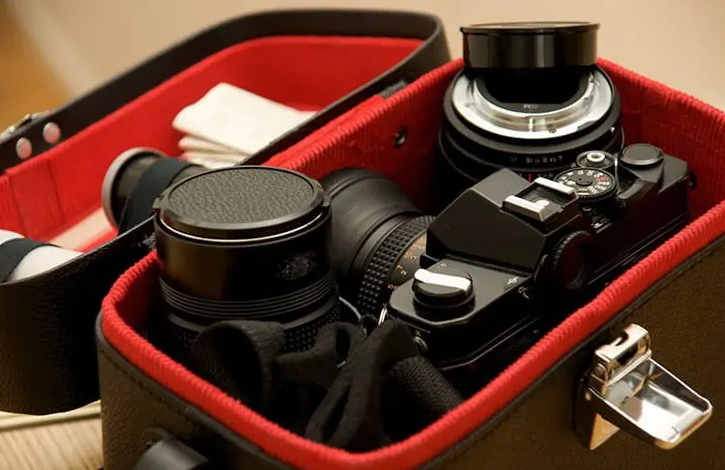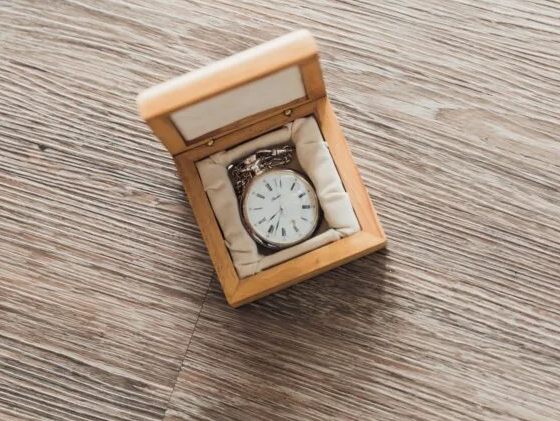A WatchBox provides protection, organization, and elegant display for watches.
Table of Contents
Understanding the WatchBox
WatchBoxes, often also known as watch cases or display cases, have steadily gained popularity among watch enthusiasts and collectors over the years. Their primary purpose is to store, display, and protect valuable timepieces. However, the utility of a WatchBox goes beyond mere storage.

Definition and components
A WatchBox is a specially designed storage solution primarily made to hold wristwatches. Its design considerations revolve around offering protection against dust, moisture, and potential mechanical damages. Let’s delve deeper into its components:
- Exterior Shell: Usually crafted from fine woods like mahogany or oak, though some modern designs incorporate leather or synthetic materials.
- Interior Lining: Typically, the interior is lined with a soft material like velvet or suede to prevent scratches on the watches.
- Compartments or Pillows: These are cushioned slots where each watch rests. For a WatchBox designed to hold ten watches, there will typically be ten compartments, each with its respective pillow.
- Lock Mechanism: Many premium WatchBoxes come with a lock mechanism to ensure the safety of the watches. These locks range in quality and mechanism, from simple latch systems to more sophisticated biometric locks.
Different types of WatchBoxes
WatchBoxes can vary significantly based on size, material, quality, and functionality. Here’s a more detailed look:
- Size and Capacity: WatchBoxes can range from compact cases that hold a single watch to large ones designed for 50 watches or more. The average size for personal use usually accommodates 5-10 watches.
- Material Used: As mentioned, wood is a popular choice. However, materials like leather, plastic, and even metal are used. The material often dictates the cost and quality. For instance, a solid mahogany WatchBox might be priced at $200, while a synthetic leather one could be around $50.
- Functionality and Features: Some WatchBoxes come with added functionalities like a built-in watch winder, which is crucial for automatic watches. These WatchBoxes tend to be on the pricier side, with prices ranging from $250 to even $2000 for high-end models.
- Aesthetic Value: The design, finish, and craftsmanship play a pivotal role in determining the value of a WatchBox. Handcrafted designs with intricate patterns can fetch higher prices.
Benefits of Using a WatchBox
While many might see a WatchBox as just another accessory, its importance becomes evident when we delve into the myriad of benefits it offers. For individuals who cherish their timepieces, whether for their monetary or sentimental value, a WatchBox serves multiple purposes.
Protection and security for luxury watches
Timepieces, especially luxury watches, can be significant investments. A high-end Rolex or Patek Philippe can easily cost upwards of $10,000. Thus, ensuring their safety becomes paramount.
- Physical Protection: WatchBoxes are designed to protect watches from dust, moisture, and direct sunlight, all of which can deteriorate a watch’s appearance and functionality. They also shield watches from accidental knocks and bumps.
- Security: With the rising cost of luxury watches, theft becomes a concern. A WatchBox with a robust lock mechanism provides an extra layer of security. Biometric locks, while pricier at around $500, offer unparalleled security compared to traditional latch systems that might cost as low as $20.
Aesthetics and display purposes
For enthusiasts, displaying their collection is a matter of pride.
- Showcase: A well-crafted WatchBox serves as a centerpiece in many living or bedroom settings. Transparent glass tops allow a clear view of the watches, making them conversation starters.
- Preserving Beauty: Storing watches in a lined compartment ensures they remain scratch-free, maintaining their luster and aesthetic value for years.
Organization and easy access
For those with multiple watches, remembering where each one is can be a task.
- Categorized Storage: With distinct compartments, one can store watches based on their type, frequency of use, or even color. For instance, casual watches can occupy the top rows while luxury ones take the bottom.
- Time Efficiency: Imagine the time saved when you know exactly where your desired watch is, especially when you’re in a rush. A well-organized WatchBox can save precious minutes in a day.
Materials and Craftsmanship
The essence of a WatchBox lies not just in its functionality but also in the materials and craftsmanship employed. These elements play a significant role in determining the box’s longevity, aesthetic appeal, and even its price. Delving into the intricacies of these factors reveals the art and science behind the creation of each WatchBox.
Common materials used in making WatchBoxes
The material choice significantly affects the quality and durability of the WatchBox. Here’s a breakdown of some common materials:
- Wood: This is a popular choice due to its durability and classic appearance. Varieties like mahogany, oak, and walnut are often preferred. A handcrafted wooden WatchBox can range from $150 to $500 depending on the wood type and finish.
- Leather: Offering a sophisticated touch, leather WatchBoxes are both durable and stylish. Genuine leather boxes might cost anywhere between $100 and $300, whereas synthetic leather options are available from $50 upwards.
- Metal: Metal boxes, often made from stainless steel or aluminum, are known for their robustness. Prices vary based on design, with simpler designs costing around $70, while more intricate ones can go up to $200.
- Glass or Acrylic Tops: Many WatchBoxes feature a clear top for display purposes. While glass offers clarity, acrylic is less prone to breaking. The cost of adding a glass top can increase a box’s price by $20-$50.
Craftsmanship and design considerations
Craftsmanship often determines a WatchBox’s value and appeal.
- Handcrafted vs. Machine-made: Handcrafted boxes often boast unique designs and finer finishes. The time and skill involved can drive their prices to $500 or even higher. Machine-made boxes, while more uniformly produced, are generally more affordable, starting at around $30.
- Interior Lining: The choice of lining material, such as velvet or felt, ensures watches remain scratch-free. A high-quality lining might add an additional $10-$30 to the overall cost.
- Hinges and Locks: The smoothness of a hinge or the security offered by a lock play crucial roles. Premium hinges and locks can increase a box’s price by $20-$100.
- Design and Aesthetic: Intricate designs, inlays, or engravings can significantly elevate a WatchBox’s appeal. Such design intricacies can increase the price by $50 to $200 or more.
WatchBox vs. Other Storage Solutions
The storage and display of watches have taken various forms over the years. From WatchBoxes to watch rolls and everything in between, each storage solution has its own merits and challenges. However, when it comes to showcasing and protecting a prized collection of timepieces, it’s essential to make an informed choice.

Comparing with watch rolls, pouches, and drawers
Let’s delve into the nuances of these alternatives:
- Watch Rolls: These are cylindrical storage solutions primarily made of leather or fabric. They are particularly useful for travelers due to their portability. A decent quality leather watch roll can be priced between $40 and $150. The main limitation is that they offer minimal protection against hard impacts, and the watches are not displayed when stored.
- Pouches: Often made of soft materials like suede or velvet, pouches are another portable option. They’re lightweight and often used for individual watches. Prices vary, but most range from $10 to $50. The downside is that accessing a watch requires unpacking, and like rolls, they don’t offer robust protection.
- Drawers: Some watch enthusiasts dedicate entire drawers for their collection. While this offers ample space, the watches are not displayed, and unless the drawer has individual compartments, watches can collide, leading to potential scratches. A specialized watch drawer with compartments can cost anywhere from $100 to $500 based on design and materials.
Why a WatchBox might be the preferred choice
When weighing the pros and cons, the WatchBox often emerges as a favorable option for several reasons:
- Display: One of the distinct advantages of a WatchBox is its display capability, especially those with glass or acrylic tops. This feature not only allows for easy viewing but also adds an aesthetic touch to any room.
- Protection: With cushioned compartments and a sturdy exterior, WatchBoxes offer superior protection against dust, moisture, and physical damages compared to rolls and pouches.
- Organization: The segmented design ensures each watch has its dedicated space, minimizing the risk of scratches or damages from contact with other watches.
- Value Proposition: Considering the prices of luxury watches, investing in a high-quality WatchBox, which might cost between $100 to $500, seems reasonable. This cost ensures that watches worth thousands are well protected and elegantly displayed.
Choosing the Right WatchBox
Selecting the ideal WatchBox is akin to choosing a home for your precious timepieces. The choice is influenced by numerous factors, ranging from the functional to the aesthetic. Here, we’ll explore the elements to consider and provide guidance on navigating this purchase.
Factors to consider: Size, material, lock mechanism
- Size: Before diving into designs and materials, it’s crucial to know how many watches you plan to store. If you’re starting a collection, a 6-slot box might suffice, but for seasoned collectors, boxes with 20 slots or more might be more appropriate. Also, consider the dimensions of each compartment, especially if you own larger watch models.
- Material: As touched upon earlier, the material impacts both the box’s aesthetics and durability. Wooden boxes exude a timeless charm, leather ones offer sophistication, while metal variants promise robustness. While wooden options can range from $150 to $500, genuine leather boxes hover around the $100 to $300 mark.
- Lock Mechanism: If security is a concern, especially for luxury watch owners, the lock mechanism becomes vital. Traditional latch systems might come at a negligible cost, but for superior security, biometric or combination lock systems are worth considering, albeit at a higher price point of $50 to $200 extra.
Price ranges and brands to consider
When budgeting for a WatchBox, it’s essential to align your price range with your needs and preferences. Here’s a breakdown:
- Budget-friendly (Up to $100): At this range, you’ll mostly find smaller boxes, often machine-made, possibly with synthetic leather or basic wooden designs. Brands like SONGMICS and Case Elegance offer decent options in this bracket.
- Mid-Range ($100 – $300): This range sees a mix of larger boxes, better materials, and finer craftsmanship. Handcrafted options start appearing, and brands like WOLF and Glenor Co dominate this segment.
- Premium ($300 and above): Reserved for the aficionados, these boxes boast the finest materials, intricate designs, and superior lock mechanisms. Brands such as Buben & Zorweg and Rapport London offer exquisite pieces that are as much a work of art as they are functional storage units.






